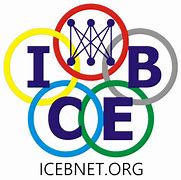Document Type
Abstract
Abstract
The concept of brand loyalty has been extensively discussed in traditional marketing literature with main emphasis on two different dimensions: behavioral and attitudinal loyalty. Oliver (1997) has extended a conceptual framework of brand loyalty that includes the full spectrum of brand loyalty based on a hierarchy of effects model with cognitive, affective, conative (behavioral intent) and action (repeat purchase behavior) dimensions. The concept of e-loyalty extends the traditional brand loyalty concept to on-line consumer behavior.
Although the underlying theoretical foundations of traditional brand loyalty and the newly defined phenomena of e-loyalty are generally similar there are unique aspects of its manifestation in Internet based marketing and buyer behavior. Schultz and Bailey (2000) describe customer/brand loyalty in cyberspace as an evolution from traditional product driven – marketer controlled concept towards a distribution driven – consumer controlled and technology facilitated concept. E-loyalty also has several parallels to the “store loyalty” concept (Corstjens and Lal, 2000) such as building repeat store visiting behavior over and above the purchase of established brand name items in the store. As extensively discussed in Schefter and Reichheld (2000) e-loyalty is all about quality, customer support, on-time delivery, compelling product presentations, convenient and reasonably priced shipping and handling, and clear and trustworthy privacy policies.
This paper presents an integrated framework of e-loyalty (see figure below) and its underlying drivers in terms of (a) Website & Technology (b) Customer Service & Logistics (c) Trust & Security (d) Product & Price and (e) Brand Building Activities. The nature of these factors in building customer loyalty are discussed with examples of current practices. Managerial and future research implications from the proposed framework are also presented.
Recommended Citation
Krishnan, Krish S., "From Brand Loyalty to E-Loyalty: a Conceptual Framework" (2001). ICEB 2001 Proceedings (Hong Kong, SAR China). 29.
https://aisel.aisnet.org/iceb2001/29
Abstract Only


